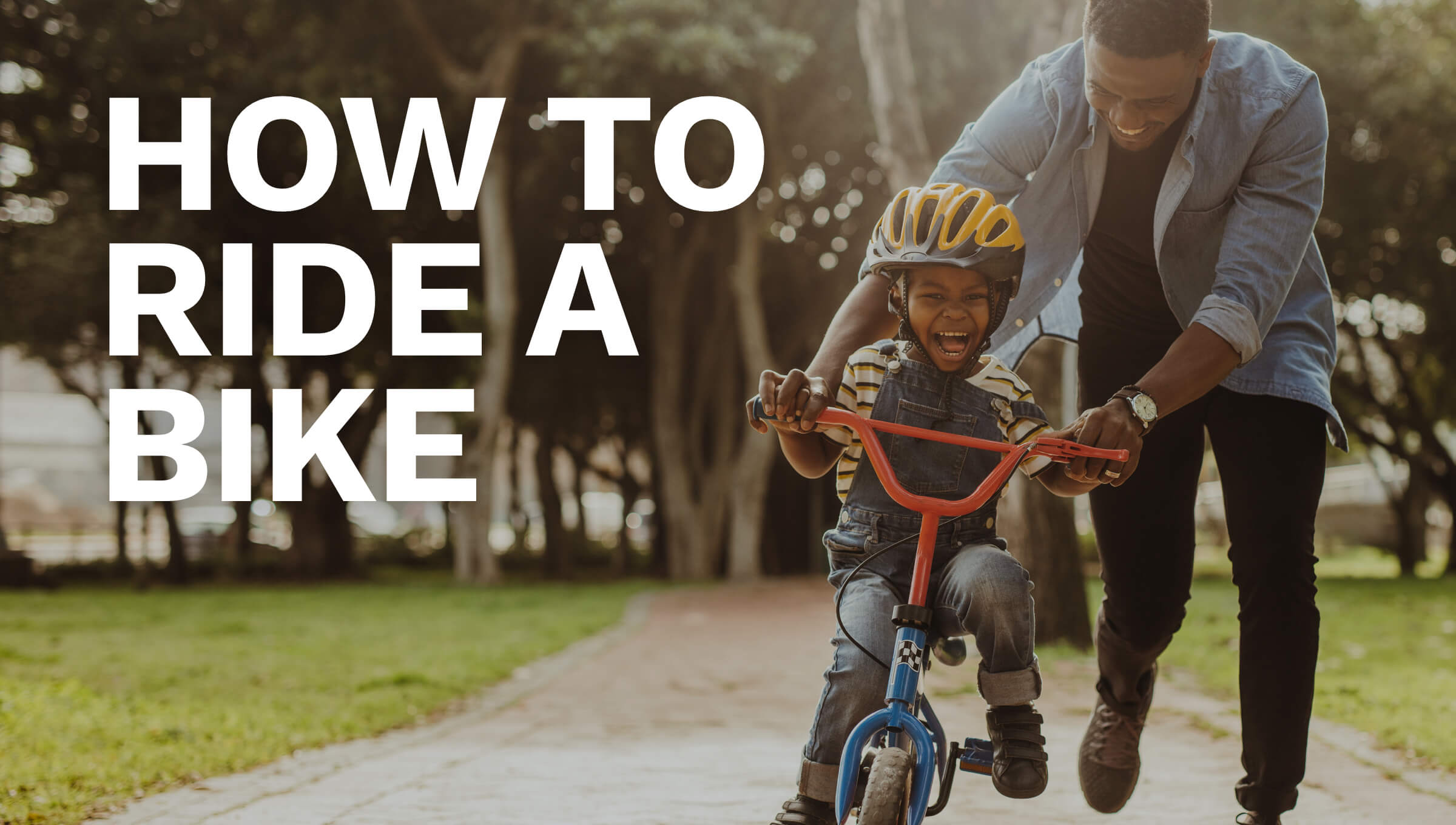
How to Ride a Bike
Maybe you've made it all the way to adulthood without ever riding a bike. Maybe you have a young child who is ready and willing to experience the world on two wheels. Learning how to ride a bike and teaching someone how to ride a bike are two completely different experiences. However, we've got you covered in our helpful guide to teaching yourself and your little ones how to ride a bike safely and enjoy endless fun in the outdoors.
By the end of this guide, you should know:
- How to Ride a Bike
- How to Teach a Child to Ride a Bike
All you need is a bike, helmet, a flat surface without grass and a quiet area and you're ready to ride.
How to Ride a Bike
If you have never ridden a bike before, it can seem like a daunting challenge to take on as an adult, but it really isn't as difficult as you may think. There's no time like the present and once you've mastered two wheels, you've got yourself a cheap new mode of transport and a new hobby. So, follow these simple steps and you'll be riding a bike in no time.
1. Setting Your Bike up
We wouldn't recommend buying yourself a brand new, expensive bike if you've never ridden one before. So, try to get a bike second hand or borrow one from a friend as you may topple over a few times while you're learning.
Before you even get on the bike, make sure you know how the brakes work and test them out by walking alongside the bike and pulling the brakes. Once you're satisfied, adjust the bike so you are comfortable. You should make sure the top tube isn't too high, adjust the seat so you can sit with your feet on the ground when you are sitting down and you should be able to reach the handlebars comfortably.
2. Get to Know Your Bike
Practice mounting and dismounting your bike and remember to pull the brakes when you get on and off so the bike doesn't wobble or move. Next, you can start to move.
Once you can get on with ease and sit comfortably, practice moving a little bit and applying the brakes with different levels of pressure. To move, push away from the ground gently with one foot, then the other. Don't use a great deal of force as you only want to get used to the motion of moving whilst on a bike and test your balance by looking straight ahead. When you are comfortable with moving, try to lift both feet off the ground and maintain your balance, putting a foot down if you begin to wobble.
3. You're Ready to Pedal
If you can comfortably glide, apply your brakes and maintain your balance then you're ready to start pedalling.
Mount your bike, reach for the handlebars and sit on the saddle. Keeping one foot on the ground, use the other foot to guide the pedal up to the 2 o'clock position and place your foot on top of it. Now, push the pedal forward with your foot and lift the other foot off the ground and lift it onto the other pedal whilst moving forwards. Repeat the motion of pushing each pedal forward with your foot when it is in the high position and always look ahead to where you are going. If you look down at your feet, this is when you are likely to lose your balance.
Once you have got the hang of peddling, practice cycling around a quiet, flat area and gently braking before introducing some turns and obstacles to move around. When you get more confident, you may want to raise your seat slightly so you only have a slight bend in your knees. Try to remain in a neutral gear whilst you are first learning - you can introduce gear changes once you get more confident and are riding uphill or on different terrain.
How to Teach a Child to Ride a Bike
Teaching a child to cycle can be a little bit trickier as you are not in control, but there are plenty of things you can do to make riding a bike as safe and as fun as possible. Usually, children learn how to ride a bike around the age of 4-6, but you can get them used to being on their own bike from much younger with trikes or balance bikes. The younger you can teach them how to ride, the easier it will be for the rest of their lives. So, if you're wondering how to teach your son to ride a bike, or daughter, niece, nephew or family friend.
1. Learn How to Balance
Balance bikes are suitable from as young as 18-months to 2 years of age. As soon as your child is walking around with ease, they can start to use a balance bike. Because it involves pushing themselves along with their feet, they can get used to the sitting position whilst being able to put their feet on the floor whenever they need to.
2. Learn how to Pedal
Once your little one can confidently balance and glide along while lifting their feet off the ground, it's time to get a proper children's bike. Choose one that you can add training wheels to as this gives extra stability.
When kids learn to pedal, get them to first sit on the bike with training wheels on and hold onto the handlebars. Raise one pedal to the 2 o'clock position and get your child to put their feet on both pedals then push forward with their top foot. You can hold onto the back of their bike seat at first or under their armpits to give them more support while they are learning to pedal. Once they have got the hang of it, leave the training wheels on for at least a few days so they can also master turning and braking.
3. Apply the Brakes
Once your child can go, they also need to learn how to stop. First of all, show your child where the brakes are, then explain what they do. Once they understand when and why to use their brakes, they need to learn how.
Demonstrate by placing your hand over theirs and gently squeezing the brake lever, then ask them to try it by themselves. Always teach children to apply the brakes gently so they don't stop suddenly and lose control or fall off. Once they've got the hang of braking, let them practice while cycling around and challenge them to make some turns or move around obstacles.
4. Take off the Training Wheels
This can be a scary step to take for you and your little one. But, if you've followed all of our steps and taken your time, your little one might just take you by surprise.
Get your child to mount their bike as usual and bring one pedal up to the 2 o'clock position. Like before, you can either hold onto the back of the seat or under their armpits to help them balance. Tell them to start pedalling as normal and run alongside your child as they start to ride. Whether they get it the first time or it takes a few tries, make sure you don't let go or let them go too fast at first because if they fall, it may knock their confidence. Let them practise using their brakes again while you still have hold until you are both confident they can ride on their own.
FAQs
How do you fall safely?
Falling off a bike is never ideal, but sometimes accidents happen. The best thing you can do is to stay calm, as panicking can only make the situation worse.
Try to avoid hard impacts, steer away from obstacles or curbs and rocks. When falling don't put your hands on your head, instead, try to tuck and roll without tensing your body too much.
The hands-down safest way you can fall is by wearing as much protective gear as possible. So helmets, knee and elbow pads are essential! And if you're hurt, seek medical attention immediately.
How often should you practise?
Learning to ride a bicycle can vary greatly from person to person. However, with consistent practise of one hour each day, many people, including children, are able to learn within a few weeks. It's important to remember that everyone learns at their own pace, so patience and persistence are key.
So, whether it is you or your child learning to ride a bike, the key is to take things slowly so you can build up confidence. Always remember to wear a helmet when riding a bike and go somewhere quiet when you are learning to ride.
Once you and your little ones have mastered two wheels, you can enjoy fun family bike rides together all over the UK. And, why not look for a bike rack so you can take your adventures further afield?

